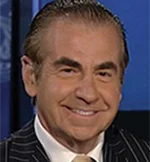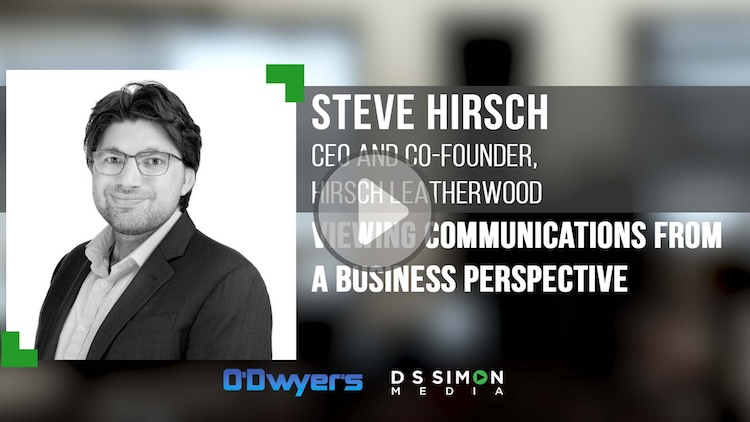 |
| Fraser Seitel |
In March of 1991, the country was riveted by a video of an unarmed Black man in Los Angeles being pummeled by eight LAPD officers. Rodney King suffered a fractured facial bone, a broken right ankle and multiple lacerations. And in the aftermath of the beating, race riots erupted in major cities across the U.S.
The riots subsided only after King went on television, pleading for peace. “Why can’t we all just get along,” he famously implored. Thirty years later, in a nation torn by division and polarization, where people jump ugly at the bat of an eye, Rodney King’s simple declaration has never been more relevant.
“Why can’t we just get along?”
The practice of public relations has always been about moderation—about first listening to opposing views and then responding in a logical and dispassionate manner with the position of your client.
The job of a public relations professional is unique in an organization. The public relations executive is the only one who represents both the best interests of the client, and also the best interests of the client’s publics. That’s why in a crisis, smart officials turn to public relations counselors rather than lawyers, so the views of all sides—not just the client—are considered before taking action.
Today, of course, with more people dug in on one side or the other, it’s much more difficult to be objective, counsel moderation, “just get along” with your adversaries. If you work for a client like Donald Trump or Bernie Sanders or Chik-fil-A or Ben & Jerry’s, neutrality and even-handedness are probably the last qualities your employer will tolerate.
Nonetheless, public relations ought to be about, well, “relations.” That is, building rapport and trust even with those who hold opposing views. This is particularly the case today when dealing with the media.
In 2022, media relations remains a foundational skill for successful public relations people. While knowledge of social media is also obligatory for today’s public relations professional, major clients still care deeply about how they’re treated by the New York Times, the Washington Post, TV networks, cable news, TMZ and all the rest of the so-called mainstream media.
For public relations people, dealing effectively with these traditional media has become another polarized minefield. Journalists—who once prided themselves on being “objective”—are today, by and large, just as biased and one-sided as the rest of society. And they make no bones about it.
So, if you’re on the wrong side of a Paul Krugman, or Maggie Haberman at the New York Times, or a Sean Hannity or Laura Ingraham at Fox News, or a Rachel Maddow, or Joy Reid at MSNBC, or a Jim Acosta or Don Lemon at CNN—forget about it.
You’re wasting your time. They’re simply not interested in listening to your side of an argument. In the old days, responsible publications strictly forbade their reporters from double-dipping as “contributors” to broadcast competitors. Today, the practice is commonplace, with reporters primarily concerned about cultivating their own, individual “brand.” And if a reporter for the Times or the Post or another major outlet is also employed at right-leaning Fox or left-leaning MSNBC or CNN, they’re unlikely to approach their reporting with much neutrality.
The sad fact is that the default position for most mainstream “journalists” today is to dismiss out-of-hand any argument that doesn’t agree with their own predetermined bias. A dwindling number of reporters or editors are willing even to listen to an opposing argument.
But there are still a few independent stalwarts left, even among the deeply-partisan cable news anchors. These three, in particular, stand above all others.
Brett Baier, Fox News
Before Brett Baier, there was Chris Wallace. Wallace, the son of “60 Minutes” Mike, prided himself on being a lone voice of objectivity on right-wing Fox. But as his star ascended, Wallace, like others around him—see Tucker Carlson—got a bit full of himself. And when he finally abandoned ship earlier this year to grab the brass ring at CNN’s ill-fated streaming service, Baier slid right in to replace him at Fox.
As host of Fox’s nightly “Special Report,” Baier plays most things right down the middle, distinguishing himself by featuring guests who denounce Donald Trump for January 6 and others who denounce Joe Biden for incoherent energy policy. And unlike his predecessor, Wallace, and most of his Fox News colleagues, Baier never flashes arrogance or makes the proceedings about himself.
Erin Burnett, CNN
CNN, which cashed in for four years on a format of “anti-Trump all-the-time,” is shifting emphasis. In February, the network brought in buttoned-up TV executive Chris Licht to replace glitzy, headline-grabbing Jeff Zucker as president. Licht described his challenge as one of restoring more hard news and offering a less sensationalistic focus at CNN.
Burnett represents that hard news focus. She spent her formative years reporting financial news at both Bloomberg and CNBC, interviewing and being friendly with business and financial leaders, most of whom resided firmly in conservative territory. Accordingly, Burnett’s nightly “Out Front” program discusses the news of the day in a generally straightforward manner.
While Burnett and her fellow anchors continue to exhibit little on-air love for Donald Trump— and who can blame them?—it’s likely that under Licht’s leadership, other CNN veterans like Anderson Cooper and Wolf Blitzer will also become increasingly more dispassionate in their commentary.
Ari Melber, MSNBC
In the vast left-wing wasteland that is MSNBC, Ari Melber is a beacon of sanity.
How Melber sneaked through the cracks to land his own show is anybody’s guess. But there he is every night, surrounded by the likes of GOP turncoat Nicole Wallace and the right Rev. Al Sharpton, hosting “The Beat,” a refreshingly-apolitical examination of the issues of the day.
It’s a credit to Melber that he’s just about the only MSNBC anchor who attracts Republicans as well as Democrats as guests. A former courtroom lawyer, Melber disdains the faux outrage that fuels his colleagues and instead politely pushes and probes, forcing interviewees to abandon their talking points and expose their true beliefs.
Baier, Burnett and Melber are three cable journalists who will give public relations clients a fair hearing because they accept the time-honored proposition that one can be skeptical and challenging without being hostile and rude.
In other words, a successful professional communicator can also “just get along.”
***
Fraser P. Seitel has been a communications consultant, author and teacher for 40 years. He is the author of the Pearson text “The Practice of Public Relations,” now in its 14th edition, and co-author of “Rethinking Reputation" and "Idea Wise.” He may be reached directly at [email protected].










 Have a comment? Send it to
Have a comment? Send it to 
Jul. 28, 2022, by Joe Honick
Fraser, sadly, you must not be in touch with or aware of the rapidly growing numbers of right wing media across the internet, starring an absolutist named Ben Shapiro, but also including others like Bongino (major trumpeter for Trump) and more.
The idea of referring just to something called "Mainstream Media" does not work any longer because the right wing has mounted an army of propagandists who daily speak to millions. Their goal: to bring down the Biden administration and often to resist or deny any response to their messages.
You are of course entitled to the limitations of the specific organizations to whom you refer, but your method simply belies your message.
Finally, as to the limitations of objective journalism, you might expand your own research to include the Murdoch right wing propaganda machines and the more powerfully rejectionist aspect of the outfits buying out news media and then either closing them down and firing the reporters or erasing any sense of their history. Absent any reference to all of these dangerous realities suggests the need for you to reflect more broadly and perhaps amend your commentary.